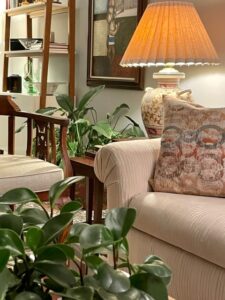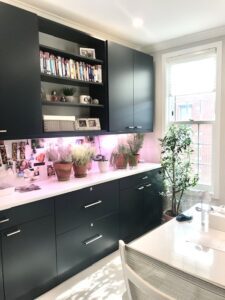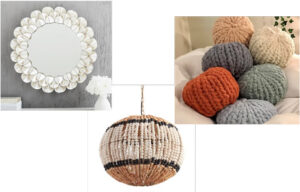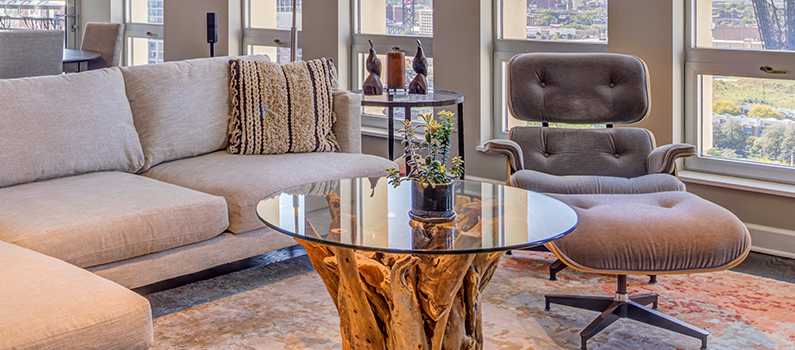There are many ways that you can bring nature into your home to create healthy environments and an enormous sense of peace and well-being.

The power of green: Did you know that house plants naturally cleanse the air and add carbon dioxide into the atmosphere? For example, the Peace Lilly is known to remove all three of the most common volatile organic compounds (VOCs): formaldehyde, benzene, and trichloroethylene. Aloe vera is also great for the kitchen because it clears the byproducts of chemical-based cleaners.

The power of natural light: Light-filled rooms support our natural circadian rhythms and help prevent anxiety and depression. Natural light also increases visual clarity and color perception, stimulates the pineal gland to help to regulate sleep patterns, increases mental alertness, and supports the regulation of Vitamin D, serotonin, and melatonin that can prevent colds and flu.

The power of calming colors: Scientists in the field of color psychology observe how different colors impact human behavior. In general, colors have different meanings, connotations, and psychological effects. Warm tones—oranges, reds, and yellows—represent sunlight and heat. These colors tend to make us feel cozy, passionate, and playful and so are best for active rooms. The cool tones of blue, green, purple represent water, sky, and snow. These colors tend to make us feel calm, soothed, refreshed and are best for bedrooms, bathrooms, meditative spaces, and perhaps offices.

The power of organic forms: When people view shapes, a multitude of psychological instances occur, with each attributing different emotions, thoughts, and perceptions that resonate with our brain. Geometric shapes are made up of a series of straight lines combined into a form that often features hard edges. Triangles, squares, rectangles, and diamonds are common geometric shapes. These shapes mimic the structure of built environments. Organic or natural shapes mimic the form of most objects in nature, such as the imperfect, curved shapes of rocks, clouds, or trees. These types of shapes appeal to our basic instincts.
Of course, early humans would have had more familiarity with organic shapes than geometric ones. As a result, these free-form shapes, which mimic what is found in nature, feel familiar and comforting to us still.
For this reason, when you look at furniture these days, you’ll note that there are few sharp angles. Instead, you’ll see many pieces with gentle, organic lines that resemble the shapes found in nature such as curvy sofas and armchairs

The power of tactile surfaces: There are so many ways to increase the tactile nature of your home. Why do that? Texture is very important to calming the mind through touch, appealing to a primary sense. Just looking at a space filled with textures, provides a sense of calm since the act of looking at something stimulates the same sensations as interacting with it. Also, a room that incorporates lots of texture will absorb sound, making the space quieter to our ears than an open space with clean, shiny surfaces.
For your health and happiness, consider embracing biophilic design to make your home more connected to nature from the inside out. If you’d like help in creating spaces that are designed in partnership with nature, give us a call.



